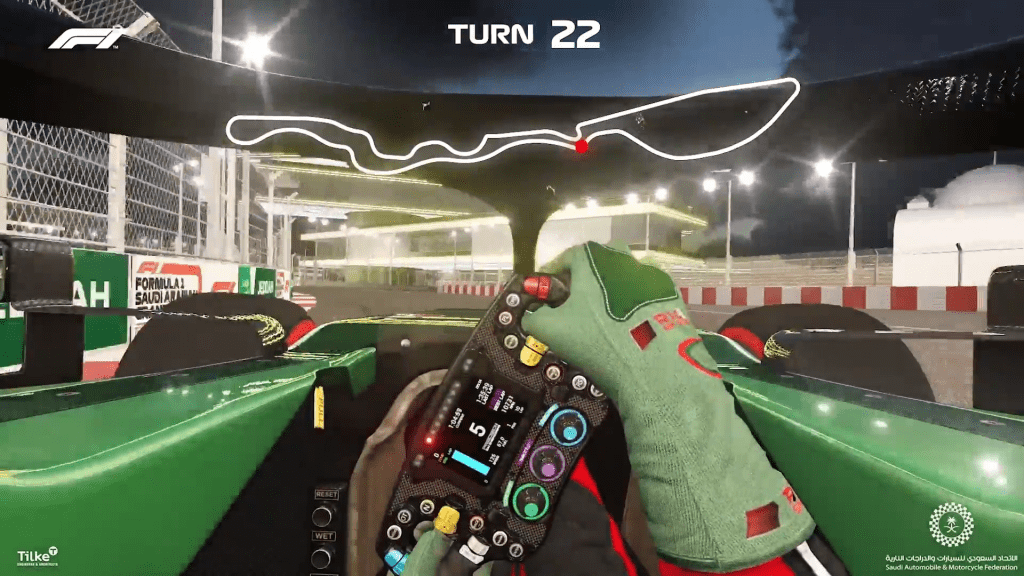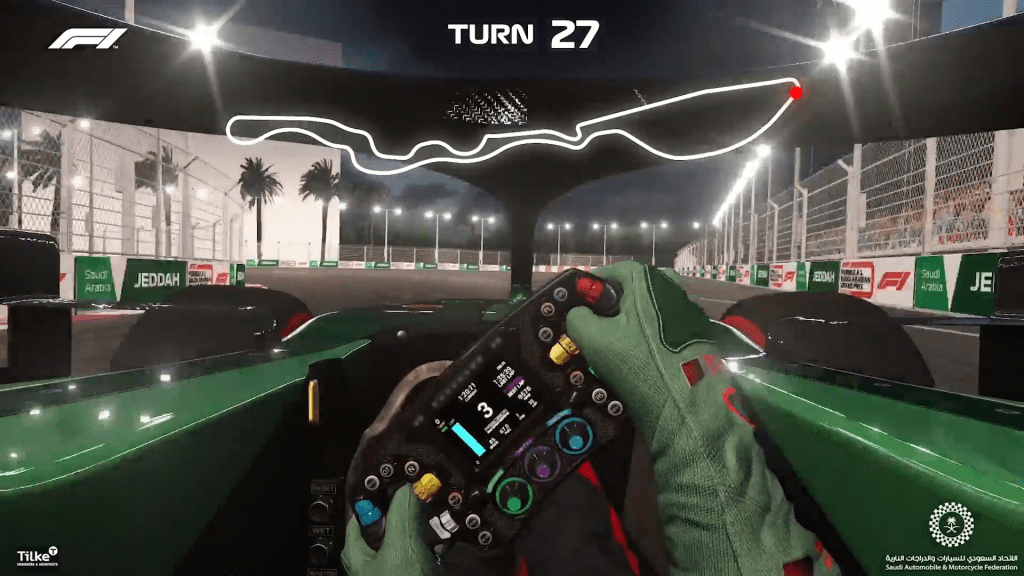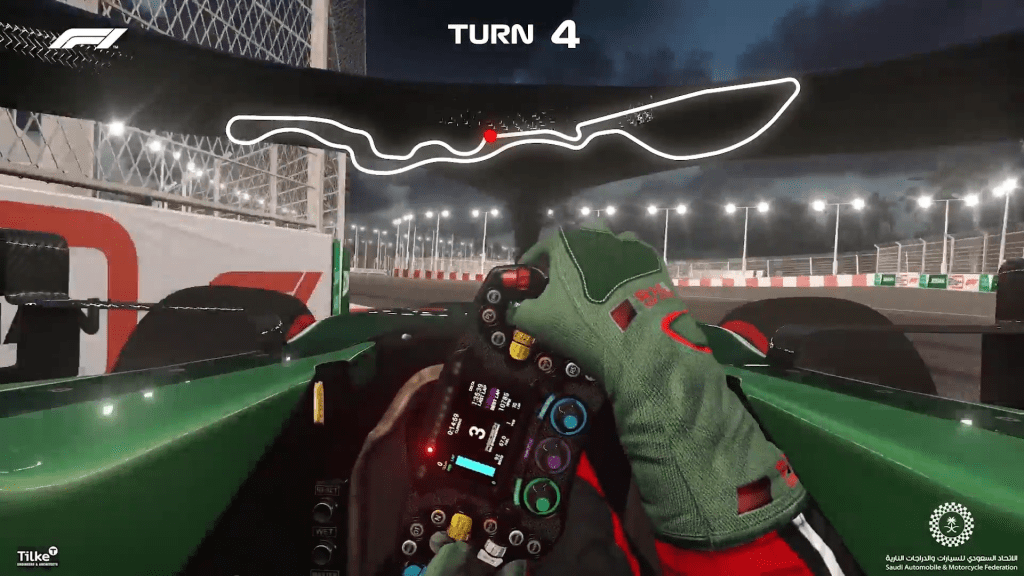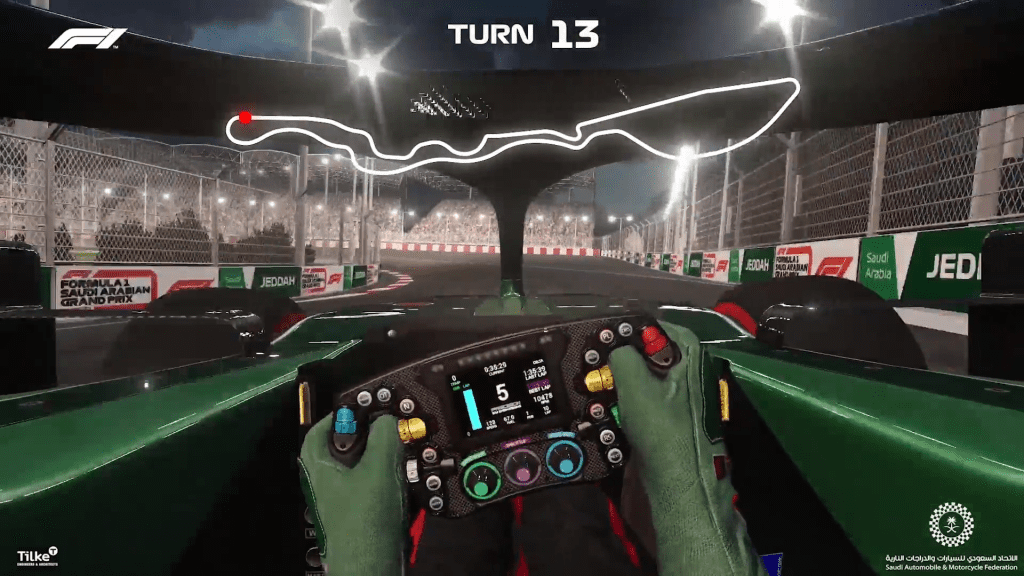Up Next

Formula 1’s new Saudi Arabian street circuit had some flashy sells attached to its unveiling, but being supposedly “designed for quality of overtaking” is the key factor.
Set to be the second-longest and second-fastest track in F1, and the longest and fastest of the street circuits, F1’s new Jeddah design is being billed as a spectacular, high-speed challenge with the backdrop of the Red Sea.
Experience all 2️⃣7️⃣ of Jeddah's ultrafast corners 🎥#F1 #SaudiArabianGP pic.twitter.com/eJwXsdm4Tj
— Formula 1 (@F1) March 18, 2021
F1 says it has been given “a relatively clean sheet of paper” to create this track, which has been designed by the favoured Herman Tilke. Judgement on how good a job F1/Tilke have done with that will only come properly in late-November, but a decent early glimpse has been offered in the form of an onboard simulation.
“We’ve been able to build a really exciting street circuit,” insists F1 sporting boss Ross Brawn, and the ultra-fast sweeps – which look quite narrow in between the walls – are an easy check in that column. But what really matters is the challenge it affords the drivers and the scope it has for good racing.

“We don’t want Mickey Mouse circuits, we don’t want those old classic street circuits where you turn 90 [degrees],” says Brawn. “We want fast, sweeping circuits.
“We want circuits which are going to challenge the drivers, and they’re going to love it. We want circuits where we can have wheel-to-wheel racing.
“This is a circuit that is utilising some existing infrastructure. But we have been lucky in that there’s been areas we’ve been able to build from scratch. So, we’ve been able to build some really exciting parts of the circuit.”
Though the track is billed as a 27-corner layout, in reality six or seven of those barely register as turns on the onboard simulation. They are flat-out kinks, and some of them barely register as a change of direction.
Of the ‘proper’ corners, only six seem to require braking. That’s a very small number of braking events for any lap, let alone a long one.
This enhances the high-speed nature of the circuit, but it poses a question mark about whether this track will fall into the category of ‘fun for drivers, not so much for fans’.
“You have to separate overtaking and racing”, says Brawn, who warns against tracks that “tick the box [of] ‘well, there’s a long straight with a hairpin at the end and you turn the DRS on and you overtake’”.

Which is why the Jeddah track has been designed with three potential DRS zones in mind and none look the sort that will promote a simple drive-by.
One is being targeted through the sweeps on the back side of the track, which look less daunting than the curves that end the lap in Baku.
The second is the curved run to the final corner, and the last is the run from the final corner to the first.
It’s worth noting F1 will be at the FIA’s mercy here because it will come down to how much risk the governing body is willing to take with having DRS zones through fast sweeps and/or a curved run to the final corner.
Assuming the DRS zones are employed, it looks like drive-by passes should be avoidable and that the DRS zones are aimed at getting drivers close enough to challenge into the last corner, and maybe the first corner.
These look the best option for overtaking, with the final corner particularly interesting.

It has a curved approach and, according to Brawn, will also have a reasonable degree of banking. It looks like a big enough braking zone to be a legitimate passing spot. The way the track bends will mean turning while braking, with lateral G-forces challenging drivers.
There is scope for an error here that could leave a driver vulnerable on the run to Turn 1, which looks like it could have been made tighter to make it a bigger braking zone to contest.
“What you want is wheel-to-wheel action,” says Brawn. “You want the driver behind to get close enough that he can take the line in the corner, and you want complexes of corners where one driver can get on the inside of another and force him out on the line, then they get to the next corner.
“And that to me is racing. That’s wheel to wheel, that’s proper overtaking. And so we make that distinction between just statistics, which are not really the key thing, and the quality of racing and the quality of overtaking. And this circuit has been designed to have quality of overtaking.”
There are parts of the track that look like they might achieve this.

The complex of corners from Turns 4-10 is fast but not entirely flat out in the simulation. It then leads onto a short straight down to Turn 13, which is a banked left-hander taken in the video in fifth gear – so not exactly slow.
Overtaking here isn’t a given but if a car does get off-line, it will impact multiple corners. The legacy of having to fend off a DRS-assisted attack into Turn 1 might realistically be felt for half the lap.
What will play a big role in defining the success of such sequences, and other parts of the track, is how wide the circuit is.
In the video it looks very narrow. The presence of the walls enhances the feeling of speed but also potentially make Brawn’s desire for wheel-to-wheel racing seems desperately difficult to achieve in places.
A secondary point on the walls: though they are nice and close at high-speed, where the mistakes will happen – i.e. the braking zones – there’s a lot of run-off on the inside and outside. That means there’s little danger of a Monaco Swimming Pool-section inside wall hit, and the punishment for running wide in those tricky, slightly banked Turns 13 and 27 is reduced.
Another initial conclusion from the first look at this track is that it will pummel the engine’s energy recovery systems given how much of the lap is taken at full throttle and how few braking events there are (again, only six in the video). This will be a challenge for the teams to master their ERS harvesting and deployment and it could mean drivers are vulnerable late in the lap if their battery has been emptied too early.

To F1’s credit, this track is not just any old street circuit. There are sections of corners with good underlying logic attached to them and any walled-in, high-speed sequence is visually stimulating. But unsurprisingly for a new track, there are questions.
Will this be undermined by the width of the roads? Are grip levels and cornering speeds going to reduce the mental challenge of this track or enhance it? And will the combination of corners successfully offset the lack of braking zones?
The answers will go a long way to determining whether F1’s “relatively clean sheet of paper” has been well-utilised.



